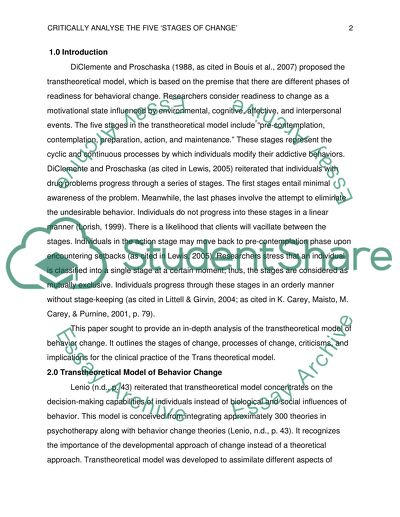Cite this document
(“'Stages of Change' in Prochaska Essay Example | Topics and Well Written Essays - 3000 words”, n.d.)
Retrieved from https://studentshare.org/psychology/1437664-attached-critically-analyse-the-five-ychstages-of
Retrieved from https://studentshare.org/psychology/1437664-attached-critically-analyse-the-five-ychstages-of
('Stages of Change' In Prochaska Essay Example | Topics and Well Written Essays - 3000 Words)
https://studentshare.org/psychology/1437664-attached-critically-analyse-the-five-ychstages-of.
https://studentshare.org/psychology/1437664-attached-critically-analyse-the-five-ychstages-of.
“'Stages of Change' In Prochaska Essay Example | Topics and Well Written Essays - 3000 Words”, n.d. https://studentshare.org/psychology/1437664-attached-critically-analyse-the-five-ychstages-of.


